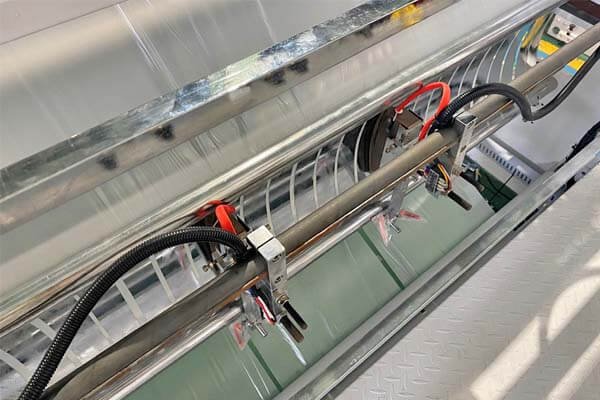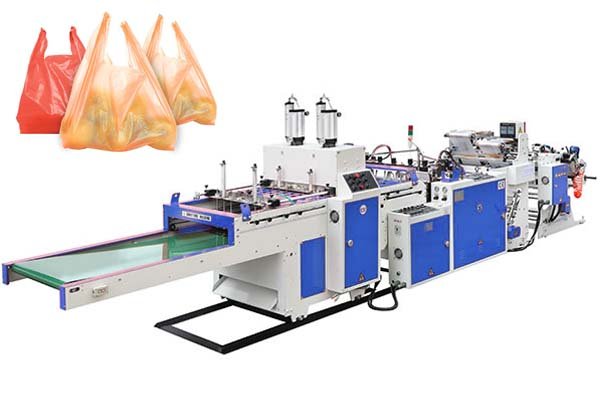
Plastic bags are everywhere—polluting landfills, harming wildlife, and lingering for centuries. Biodegradable bags were developed to tackle this issue, but the big question is: do they actually break down as promised?
Under ideal conditions like those in an industrial composting1 facility, biodegradable bags2 can decompose within 90 to 180 days. But in landfills—where there’s little oxygen or moisture—they may last for years, just like regular plastic.
How fast a biodegradable bag breaks down depends entirely on where it ends up. “Biodegradable” means microbes like bacteria and fungi can break the material into natural elements like water, CO₂, and biomass. But they need the right mix of heat, moisture, and air to do it. Industrial composting offers this environment. Landfills don’t.
Key Factors That Affect Breakdown Speed
- Materials Used: Bags made from PLA (polylactic acid) or cornstarch degrade faster than oxo-biodegradable plastics.
- Environmental Conditions: Compost piles rich in oxygen, heat, and moisture are optimal. Landfills are the opposite.
- Bag Thickness: Thicker bags take longer to break down.
At BagMec®, we design machines specifically to work with PLA3 and other compostable materials—so the bags our systems produce are built to degrade as intended.
Are Biodegradable Garbage Bags Worth It?
Is the extra cost justified? If you have access to proper disposal4 methods, the answer is yes.
Biodegradable garbage bags are worth it if your priority is cutting down on plastic pollution. Unlike regular plastic, they break down into harmless organic material—if disposed of correctly.

Traditional plastic can take up to 1,000 years to degrade—and even then, it turns into microplastics. Biodegradable bags, sent to industrial composting facilities, turn into nutrient-rich soil within months. But without proper disposal, their benefit drops significantly.
Why They Matter: Environmental Benefits
- Reduce Long-Term Waste: These bags are made not to last forever, helping fight plastic buildup.
- Lower Emissions: Plant-based bags like those made from PLA typically generate fewer emissions during production.
- Non-Toxic Decomposition: Certified biodegradable materials leave no harmful residue.
Practical Concerns
- Cost: They’re more expensive than regular plastic bags.
- Durability: Early biodegradable bags were weaker. That’s changed. BagMec® machines produce sturdy, reliable PLA bags.
- Disposal Access: If your area has green waste collection5, these bags are a great option. Without it, they’re less effective—but still better than plastic.
The Manufacturer’s Responsibility
Good design matters. Poorly made biodegradable bags may not break down at all.
BagMec® machines are built for materials like PLA:
- Smart Tension Control protects fragile films.
- Precision Temperature Sealing ensures strong seams that still compost properly.
- High-Speed Production lowers costs and boosts output, helping brands scale.
For example, one U.S. eco-brand scaled production of 100% compostable shopping bags using BagMec® systems tailored to their specific PLA blend.
Comparison Table
| Feature | Biodegradable Garbage Bag | Traditional Plastic Bag |
|---|---|---|
| Material | PLA, cornstarch (plant-based) | HDPE/LDPE (fossil fuel-based) |
| Breakdown Time | 3–6 months (in compost facility) | 500–1,000+ years |
| Byproducts | Water, CO₂, biomass | Microplastics |
| Disposal Method | Composting bin | Landfill or recycling |
| Production Equipment | Specialized machines | Standard plastic machines |
| BagMec® Support | PLA-compatible machines | PE-compatible machines |
How to Properly Dispose of Biodegradable Bags
Disposal is everything. Doing it wrong cancels the benefits.
Best option: place them in green waste or organics bins that go to industrial composting1 facilities. Never put them in plastic recycling.
Industrial composting provides the heat (above 131°F/55°C), air, and moisture needed for these bags to fully break down. Some cities offer curbside composting. Some grocery stores collect compostable packaging. Home composting is possible—but much slower.
Biodegradable vs. Compostable: What’s the Difference?
These terms get used interchangeably, but they’re not the same.
All compostable bags6 are biodegradable, but not all biodegradable bags2 are compostable. Compostable means the material:
- Breaks down in a compost facility within 90 days,
- Leaves no toxic residue,
- Meets strict standards like ASTM D6400.
Think of it this way:
- Biodegradable is a broad, unregulated term.
- Compostable is a certified claim with measurable results.
Look for third-party certifications like BPI (Biodegradable Products Institute)7 when buying truly compostable bags6.
Can Any Machine Make Biodegradable Bags?
No. You need specialized equipment to handle materials like PLA.
PLA is heat-sensitive and prone to tearing under stress. Standard plastic machines can't manage the tight tolerances needed.
BagMec® machines include:
- Smart Tension Control: Sensors and motors maintain perfect film tension.
- ±1°C Heat Tolerance: Guarantees seals that hold without damaging the material.
Without this tech, manufacturers risk producing weak bags and wasting materials—defeating the purpose of going green.
How BagMec® Supports the Switch to Sustainability
Many businesses want to shift to sustainable packaging8 but don’t know where to start. That’s where we come in.
BagMec® offers end-to-end solutions—custom machines, expert consultation, and ongoing support—to help companies adopt biodegradable packaging with confidence.
Here’s how:
- Consultation: We match machines to your needs—like PLA T-shirt bags or food-safe pouches.
- Advanced Equipment: A German packaging company runs both PE and PLA on our machines, achieving 99% uptime and reducing waste by 18%.
- Training and Support: We provide installation and hands-on training. For example, an Indian logistics firm now produces 2,500 heavy-duty courier bags per hour with one of our custom lines.
Final Word
Biodegradable bags are a real answer to plastic pollution—but only if the full system is in place: proper materials, proper machinery, and proper disposal.
They’re absolutely worth it—when made and used the right way.
-
Learn about industrial composting and its role in breaking down biodegradable materials. ↩ ↩
-
Explore the science behind biodegradable bags and their environmental impact. ↩ ↩
-
Discover the benefits of PLA as a sustainable material in biodegradable products. ↩
-
Understand the best practices for disposing of biodegradable bags to maximize their benefits. ↩
-
Discover how green waste collection contributes to effective waste management. ↩
-
Clarify the distinctions between biodegradable and compostable bags for informed choices. ↩ ↩
-
Explore the importance of BPI certification in ensuring product sustainability. ↩
-
Explore the advantages of adopting sustainable packaging solutions for businesses. ↩






